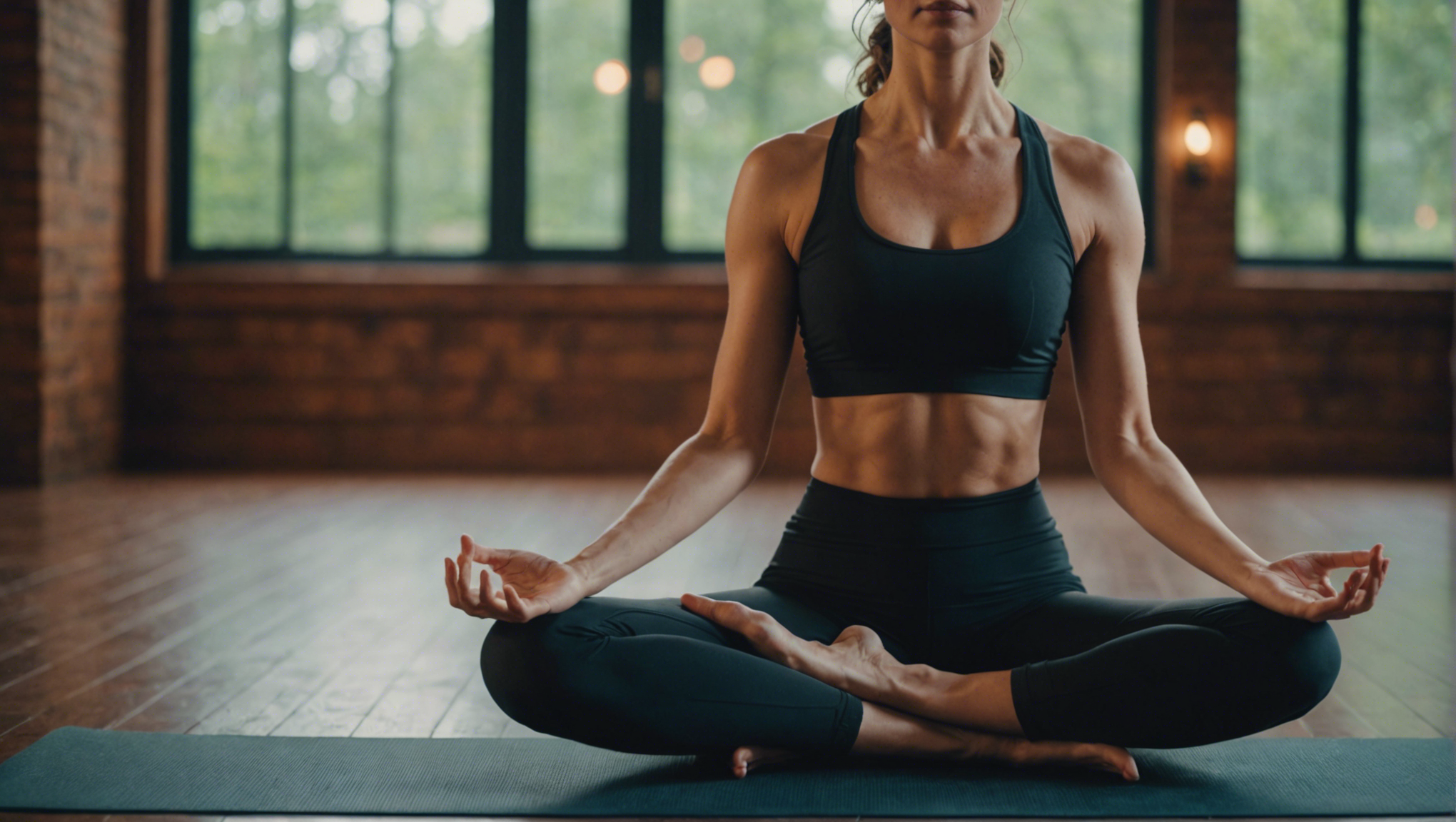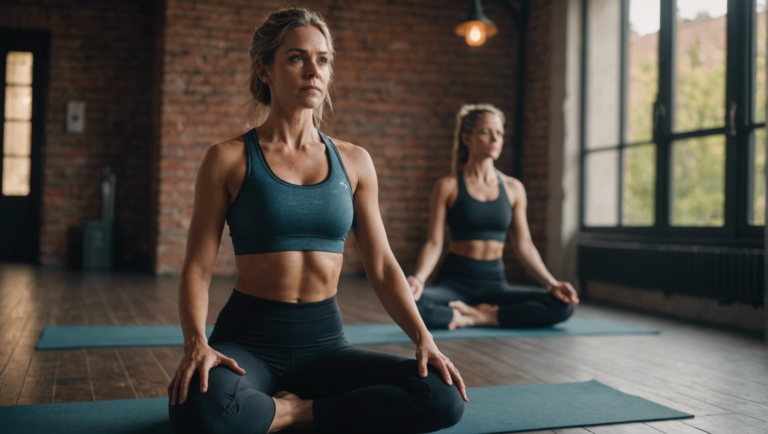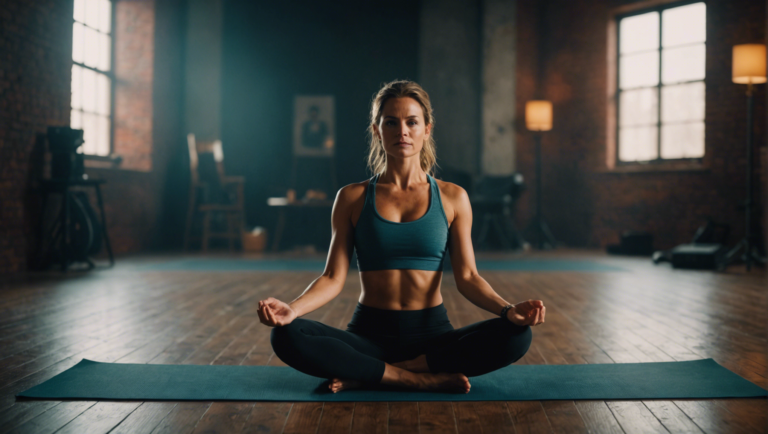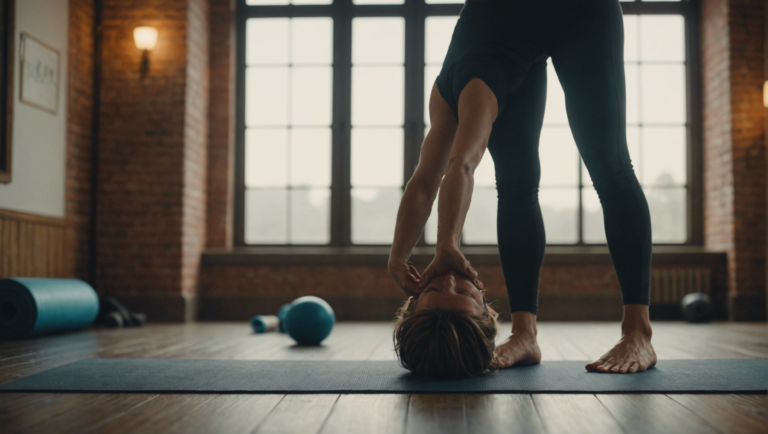Optimal Yoga Practice: How Much Should I Do?
Determining the Ideal Frequency and Duration of Your Yoga Practice
Yoga, an ancient discipline that connects the body, mind, and spirit, has surged in popularity owing to its undeniable health benefits. Understanding the optimal frequency and duration of your yoga practice is pivotal, as individuals embark on this transformative journey with varied intentions and physical capabilities. This article delves deep into facets central to tailoring a yoga routine that aligns with your life’s rhythms and goals, promoting an enlightened pathway toward well-being.
Discovering Your Yoga Objectives
Before etching a yoga regimen into your schedule, identifying what you seek from the practice is essential. Whether your aspirations are rooted in enhancing flexibility, cultivating mental peace, or building physical strength, your goals significantly influence the structure of your practice. A clear understanding of your objectives facilitates a yoga routine that not only resonates with your needs but also fosters an enduring commitment.
Assessing Your Lifestyle and Constraints
The intricate dance of life brings its tempo and constraints. A pragmatic approach to weaving yoga into the fabric of your daily life necessitates a thoughtful assessment of your schedule, commitments, and energy levels. Acknowledge the fluidity of life’s demands, and consider crafting a flexible yoga practice that can adapt to varying circumstances without diminishing its essence.
Understanding the Variability in Practice Duration
While the journey of yoga is highly personalized, a common question that surfaces is about the ideal length of a yoga session. Beginners might find solace in shorter sessions, ranging from 15 to 30 minutes, allowing the body to acclimate to new movements and the mind to the discipline of stillness. As one advances, extending the practice to 60 minutes or more can deepen the exploration of poses and meditative practices, unveiling profound layers of self-awareness and physical prowess.
Balancing Frequency with Intensity
The frequency of your yoga practice holds as much weight as its duration. Engaging in yoga multiple times a week offers a consistent channel for growth and reflection. Yet, the intensity of each session should be carefully balanced. Integrating a mix of vigorous styles, such as Vinyasa or Ashtanga, with restorative practices ensures a holistic approach, nurturing both the body’s strength and its need for recuperation.
Listening to Your Body’s Wisdom
Central to the ethos of yoga is the principle of self-awareness and honoring the body’s signals. Embrace a practice that listens to your body, adjusting frequency, duration, and intensity in harmony with its needs. This mindfulness ensures a sustainable practice, reducing the risk of injury and fostering a deeper connection with the self.
The Role of Consistency Over Perfection
In the landscape of yoga, consistency trumps perfection. Establishing a routine that you can adhere to, even if it involves shorter or less frequent sessions, cultivates discipline and paves the way for incremental progress. The beauty of yoga lies in its journey, not the destination. Embrace each session with openness, devoid of judgment, and allow your practice to evolve organically.
Nurturing Your Practice through Continuous Learning
Yoga, a discipline rich in history and diversity, offers endless opportunities for learning and growth. Engaging with the broader yoga community, seeking guidance from seasoned practitioners, and exploring varied styles and philosophies enrich your practice. This continuous quest for knowledge keeps the flame of curiosity alive, fueling a yoga practice that is both vibrant and deeply rooted in tradition.
Embarking on a yoga journey is a deeply personal endeavor, one that melds the nuances of individual lifestyles, goals, and physical capabilities. Through mindful exploration and a commitment to self-awareness, finding the optimal balance in the frequency and duration of your yoga practice becomes not just a goal, but a continuous journey of discovery. Let the principles of flexibility, consistency, and mindfulness guide you in crafting a yoga routine that resonates with your essence, fostering a sanctuary of peace, strength, and vitality within.
The Interplay Between Yoga Styles and Practice Volume
Yoga, an ancient practice rooted in Indian philosophy, has evolved into various styles, each catering to different preferences and objectives. Understanding the interplay between these yoga styles and the volume of practice is essential for cultivating a routine that aligns with your wellness goals. This exploration sheds light on how different practices can influence frequency and duration, impacting overall well-being.
Balancing Act: Hatha Yoga and Regular Practice
Hatha Yoga, often referred to as the foundation of all yoga types, emphasizes physical postures and breath control. Given its gentle pace, Hatha is suitable for beginners and those seeking a meditative practice. This style fosters strength and flexibility, making it ideal for daily sessions. For individuals looking to establish a consistent yoga routine, incorporating Hatha Yoga for 20 to 30 minutes each day can serve as a solid foundation, enhancing stability and tranquility in one’s life.
Vinyasa Yoga: Matching Intensity with Frequency
Vinyasa Yoga, characterized by dynamic flows that synchronize breath with movement, appeals to those looking for a more vigorous practice. This style is distinguished by its fluid sequences and can significantly boost cardiovascular health. Given its intensity, practitioners might opt for shorter sessions, 3 to 5 times a week. Each session, lasting between 45 to 60 minutes, can maximize the benefits of Vinyasa Yoga, striking a balance between physical exertion and necessary recovery time.
Yin Yoga: Deep Stretch and Reduced Frequency
Yin Yoga, on the opposite end of the spectrum, targets deep connective tissues, joints, and fascia. It involves holding poses for extended periods, fostering a deep stretch and mindful introspection. Due to its profound impact on the body, practicing Yin Yoga 2 to 3 times a week for sessions lasting 45 to 60 minutes is sufficient. This allows the body ample time to recover and adapt to the deep stretches, ensuring a harmonious balance between flexibility and strength.
Power Yoga: Adjusting Volume for Intensity
Power Yoga, a vigorous derivative of Ashtanga, focuses on building strength and endurance. It combines fast-paced sequences with strength-training movements, offering a challenging workout. Due to its high intensity, it’s advisable to practice Power Yoga 3 to 4 times a week, with each session lasting around 60 minutes. This schedule allows for a day of rest in between sessions, essential for muscle recovery and preventing burnout.
Restorative Yoga: Emphasizing Restoration Over Volume
Restorative Yoga emphasizes relaxation and recovery, using props to support the body in holding poses for extended periods. This style is particularly beneficial for stress reduction and deep relaxation. Given its gentle nature, practitioners can engage in Restorative Yoga as often as needed, though 2 to 4 times a week for 30 to 60 minutes is typical. It serves as an excellent counterbalance to more intense exercises and busy lifestyles, promoting mental and physical restoration.
Adapting Practice to Lifestyle
Ultimately, the optimal volume of yoga practice depends on individual goals, physical condition, and lifestyle demands. Beginners should start slowly, gradually increasing the duration and frequency of practice. Listening to the body’s signals is paramount; rest days are crucial for recovery and preventing injuries.
In the pursuit of well-being, combining various yoga styles throughout the week can offer a holistic approach to fitness, addressing strength, flexibility, endurance, and mental clarity. The key lies in finding a sustainable routine that resonates with personal preferences and goals, fostering a sense of balance and harmony.
As yoga continues to adapt and thrive, its myriad styles offer a rich palette for personal exploration and growth. By understanding the nuances of each practice and adjusting the volume accordingly, individuals can craft a yoga journey that nurtures body, mind, and spirit, embodying the essence of holistic health.
The Role of Personal Goals in Shaping Your Yoga Routine
Yoga, an ancient practice rooted in over 5,000 years of Indian philosophy, has evolved into a popular global phenomenon recognized for its extensive benefits on physical and mental health. As it becomes increasingly mainstream, individuals often ponder how to tailor their yoga practices to meet personal goals. Whether seeking to enhance flexibility, reduce stress, or foster spiritual growth, understanding the role of personal ambitions in shaping a yoga routine is pivotal.
Crafting a Yoga Routine Aligned with Personal Aims
Every yoga journey is unique, influenced by individual aspirations and life circumstances. For some, the desire to improve physical health might steer them towards more dynamic styles like Vinyasa or Ashtanga. Meanwhile, others may find solace in the meditative and restorative aspects of Yin or Hatha, seeking mental clarity and emotional balance. The initial step in developing a yoga practice that resonates with personal goals involves a reflective assessment of what one hopes to achieve through their practice.
Balancing Aspiration and Ability
A common pitfall in the quest for a personalized yoga routine lies in the misalignment between aspirations and current abilities. Beginners with ambitious fitness goals might push themselves into advanced poses prematurely, risking injury and discouragement. Likewise, those seeking tranquility might overlook the value in mastering basic asanas that prepare the body for deeper meditative practices. Striking a balance by setting realistic, incremental goals ensures a safe and satisfying journey towards the ultimate vision.
The Interplay of Frequency, Duration, and Intensity
Determining the optimal frequency, duration, and intensity of practice is crucial and highly personal. While some may thrive on a daily routine, others may find a few sessions per week more sustainable and enjoyable. The intensity and length of each session should also align with personal objectives and physical capabilities, with the understanding that these may evolve over time. This scalable approach allows practitioners to consistently challenge themselves while avoiding burnout.
Listening to the Body: The Ultimate Guide
Above all, personal intuition and bodily feedback are invaluable guides on the yoga journey. Tuning into the body’s signals—such as the difference between a beneficial stretch and harmful strain—can prevent injury and guide the evolution of one’s practice. Similarly, recognizing when a routine has become too comfortable or monotonous may indicate it’s time to introduce new asanas or meditation techniques, ensuring the practice continues to support one’s evolving goals.
Leveraging Expert Guidance
While personal goals are the cornerstone of an individualized yoga practice, the importance of seeking professional guidance cannot be overstated. Certified yoga instructors can offer personalized advice tailored to one’s aspirations, physical condition, and experience level. They can also provide modifications for poses, reducing the risk of injury and enhancing the overall practice. In the age of digital learning, numerous online platforms offer the expertise of seasoned yogis accessible from the comfort of one’s home.
Embracing the Journey Beyond the Mat
Yoga extends far beyond the physical asanas practiced on the mat. It encompasses a holistic lifestyle guided by principles such as mindfulness, gratitude, and compassion. these principles into daily life magnifies the benefits of the physical practice, aligning actions with personal goals and values. Thus, the journey of yoga becomes not just a path to improved physical or mental health but a lifelong expedition towards personal growth and fulfilment.
In sum, personal goals play an essential role in sculpting a yoga routine that is both fulfilling and beneficial. By balancing aspirations with ability, listening to the body, and seeking professional guidance when needed, individuals can craft a yoga practice that truly resonates with their personal journey. Above all, embracing the comprehensive lifestyle that yoga promotes can lead to profound transformations, both on and off the mat.
Adjusting Your Yoga Practice As Life Demands Change
Yoga is a journey that intertwines with the ebbs and flows of individual life experiences. As such, the practice must evolve to meet the shifting demands of daily existence. Whether navigating life’s milestones, encountering stress, or adjusting to physical changes, the adaptability of one’s yoga regimen is paramount. This tailored approach not only enhances the benefits but also ensures a sustainable and fulfilling path toward well-being.
Why Flexibility in Practice Matters
The essence of yoga transcends physical postures, extending into the realms of mental and emotional health. As life’s pressures mount, a flexible yoga routine can serve as a stabilizing force, offering peace and clarity amidst chaos. This adaptability supports a balanced life, where personal growth and well-being are in constant harmony with the demands of the external world.
Tailoring Yoga to Life’s Stages
Each phase of life brings its unique challenges and opportunities for growth. Adapting your yoga practice to these stages ensures that it remains relevant and supportive, allowing you to reap the fullest benefits at any age or life situation.
- Youth and Education: During these years, focusing on energizing and concentration-enhancing asanas can support stamina for studies and activities.
- Career and Family: In these potentially high-stress periods, prioritizing stress-relief practices and restorative asanas can help manage responsibilities with grace.
- Retirement and Beyond: As the body ages, gentle yoga and meditation can maintain mobility, reduce pain, and promote a deeper sense of well-being.
Responding to the Physical Demands of Life
Physical changes, whether due to aging, injury, or lifestyle adjustments, require a thoughtful approach to modifying one’s yoga practice. Emphasizing gentleness and self-compassion, selecting appropriate asanas that cater to your body’s current state can foster healing and prevent harm.
- Pregnancy: Adaptations focusing on comfort and safety for both mother and baby, emphasizing pelvic floor strengthening and relaxation techniques.
- Injury Rehabilitation: Post-injury, integrating therapeutic yoga under professional guidance can facilitate a smoother recovery.
- Aging Gracefully: balance-enhancing poses and flexibility exercises can combat the rigidity that comes with aging.
Aligning Yoga With Psychological Changes
Mental and emotional health is inseparable from physical well-being. As psychological landscapes shift, so too should one’s yoga practice, providing a much-needed anchor in times of change.
- Managing Stress and Anxiety: Integrating mindfulness and breathing techniques can offer immediate relief in stressful situations, grounding the mind and body.
- Navigating Life Transitions: During significant life changes, yoga can serve as a reflective practice, helping individuals process emotions and foster resilience.
Practical Tips for Adapting Your Yoga Practice
- Listen to Your Body and Mind: Cultivating a deep sense of awareness is crucial. Acknowledge your body’s signals and adapt your practice accordingly.
- Seek Professional Guidance: Experienced yoga instructors can offer personalized advice, tailoring your practice to meet specific needs while ensuring safety.
- Prioritize Consistency Over Intensity: Regular, mindful practice, even if gentle, is more beneficial than sporadic, intense sessions.
- Incorporate a Variety of Practices: Embrace all limbs of yoga, including pranayama (breathing exercises) and meditation, for a holistic approach to well-being.
- Stay Informed: Continuously educate yourself on the nuances of yoga and its diverse practices to keep your routine aligned with your evolving needs.
Embracing change within your yoga practice mirrors the flexibility and adaptability required in life itself. By nurturing a responsive approach to yoga, individuals can ensure that their practice grows with them, offering support, solace, and strength through every phase of life. This dynamic relationship between life and yoga practice fosters a deep, enduring connection to one’s inner self, promoting a state of balance and harmony no matter what challenges arise.
The Long-Term Benefits of Consistent Yet Flexible Yoga Practice
Yoga, a practice as timeless as it is profound, promises a plethora of benefits that extend far beyond the confines of a mat. With its roots deeply embedded in ancient philosophy, yoga today emerges not just as a series of poses, but as a holistic lifestyle choice that harmonizes the body, mind, and spirit. Engaging in a consistent yet flexible yoga routine offers a sustainable pathway to enhanced well-being, advocating for a nuanced approach to physical activity that respects the body’s inherent wisdom and limitations.
The Harmony of Mind, Body, and Spirit
The holistic approach of yoga emphasizes the interconnectedness of mental, physical, and emotional health. Through the synchronization of breath and movement, practitioners experience a profound sense of presence, cultivating mindfulness that infiltrates every facet of their lives. This mindfulness fosters a heightened awareness of the body’s cues and needs, guiding individuals towards a more intuitive understanding of their own wellbeing.
Building Physical Health Gradually
Yoga stands out from other forms of exercise by promoting gradual physical enhancement without the risk of injury. Its low-impact movements strengthen the body, enhance flexibility, and improve balance and coordination. Regular practice can also mitigate chronic pain, facilitate weight management, and improve cardiovascular health. The beauty of yoga lies in its scalability; poses can be modified to suit beginners and challenge seasoned practitioners alike, ensuring a lifetime of progression and adaptation.
Emotional Resilience and Mental Clarity
One of the most profound but often understated benefits of a consistent yoga practice is its impact on mental health. The meditative aspects of yoga, such as deep breathing and mindfulness, help to reduce stress, anxiety, and depressive symptoms. By learning to remain present and focused during a practice, people develop skills that help them navigate the complexities and stresses of daily life with a calmer disposition and clearer mind.
The Flexibility to Adapt
Embracing a flexible approach to yoga—understanding that some days might call for a vigorous Ashtanga session while others might benefit more from the gentle flows of Hatha—is key to a sustainable practice. This adaptability ensures that yoga remains a consistent part of one’s routine, rather than a rigid obligation. It allows individuals to listen to their bodies and adjust their practice accordingly, fostering a deeper connection to self and promoting long-term adherence.
Sustaining Motivation and Accountability
While the intrinsic motivation derived from feeling good post-practice is significant, the path to maintaining a consistent yoga routine can also be supported by external factors. Engaging with a community of fellow yogis, whether in person or online, can provide encouragement, inspiration, and accountability. Many find that setting specific intentions or dedicating their practice to someone or something outside of themselves can also deepen the personal significance and motivation to maintain consistency.
Achieving Balance in Life
Ultimately, the goal of maintaining a consistent yet flexible yoga practice is to achieve a balance that permeates all aspects of life. The lessons learned on the mat—patience, resilience, flexibility, and presence—have far-reaching implications, influencing how one approaches challenges, interacts with others, and perceives the world.
Embracing yoga as a lifelong journey rather than a destination invites continual growth and exploration. The long-term benefits of this approach are as diverse and profound as the practice itself, offering a sustaining source of health, happiness, and harmony that can adapt and evolve throughout the stages of life. As such, yoga transcends being merely a form of exercise; it is a guide to living fully, deeply, and with unwavering presence in every moment.
Conclusion
Crafting the optimal yoga routine demands a blend of self-awareness and adaptability, fusing the understanding of one’s physical and mental readiness with the fluidity to evolve alongside life’s ever-changing rhythms. The journey to identifying the ideal frequency and duration of your yoga practice is deeply personal, rooted in the acknowledgement that no one-size-fits-all answer exists. Instead, it’s about tuning in to your body’s needs, allowing for a practice that grows with you, enriching your life with balance and wellness.
The interplay between different yoga styles and the volume of your practice further exemplifies the need for a tailored approach. Each yoga variant offers unique benefits, from the tranquility and stress relief found in Yin yoga to the invigorating energy boost provided by Vinyasa flows. This diversity means that the optimal practice for you might look different from someone else’s, influenced by your physical condition, personal preferences, and the specific outcomes you’re aiming for. It’s this rich tapestry of styles that invites exploration and experimentation, guiding practitioners to a routine that resonates on a deeper level.
Personal goals play a pivotal role in shaping your yoga journey. Whether you’re drawn to yoga for its physical benefits, such as increased flexibility and strength, or its mental health enhancements, including stress reduction and improved focus, your objectives serve as a compass, directing the frequency, intensity, and style of your practice. This goal-oriented approach ensures that your yoga practice is not just a routine but a meaningful pursuit that aligns with your broader life aspirations.
Life is not static, and your yoga practice shouldn’t be either. Adjusting your routine as demands and circumstances change is essential for maintaining a relationship with yoga that is both sustainable and satisfying. This adaptability could mean scaling back during busy periods or intensifying your practice when more time and energy are available. It could also involve shifting the focus of your practice to address new stressors or to recover from injuries. This dynamic approach allows yoga to remain a constant in your life, an anchor amidst the ebb and flow of daily responsibilities and challenges.
The long-term benefits of a consistent yet flexible yoga practice are profound, extending far beyond the mat. Regular practice cultivates resilience, teaching practitioners to ride the waves of life with grace and poise. It fosters a deep connection with the self, encouraging a lifestyle that prioritizes wellbeing and mindfulness. Over time, the physical gains, such as improved flexibility, strength, and posture, are matched, if not surpassed, by mental and emotional growth, including enhanced self-awareness, patience, and a sense of inner peace.
Embarking on a yoga practice is to step onto a path of lifelong learning and discovery. It’s a commitment to listening—truly listening—to your body and mind, and responding with kindness and care. This journey, while uniquely personal, does not have to be solitary. Engaging with the wider yoga community, whether through classes, workshops, or online platforms, can provide support, inspiration, and shared wisdom. Yet, at its core, your practice is your own—a sacred space for growth, reflection, and renewal.
Ultimately, the secret to an optimal yoga practice lies in the balance between discipline and flexibility, structure and spontaneity. It is about embracing the ever-changing nature of life and oneself, finding stability within mobility. By tuning into personal needs and aspirations, accommodating the waves of life’s demands, and committing to a journey of continuous growth, your yoga practice can become a source of strength, joy, and equilibrium, enriching every facet of your existence.



